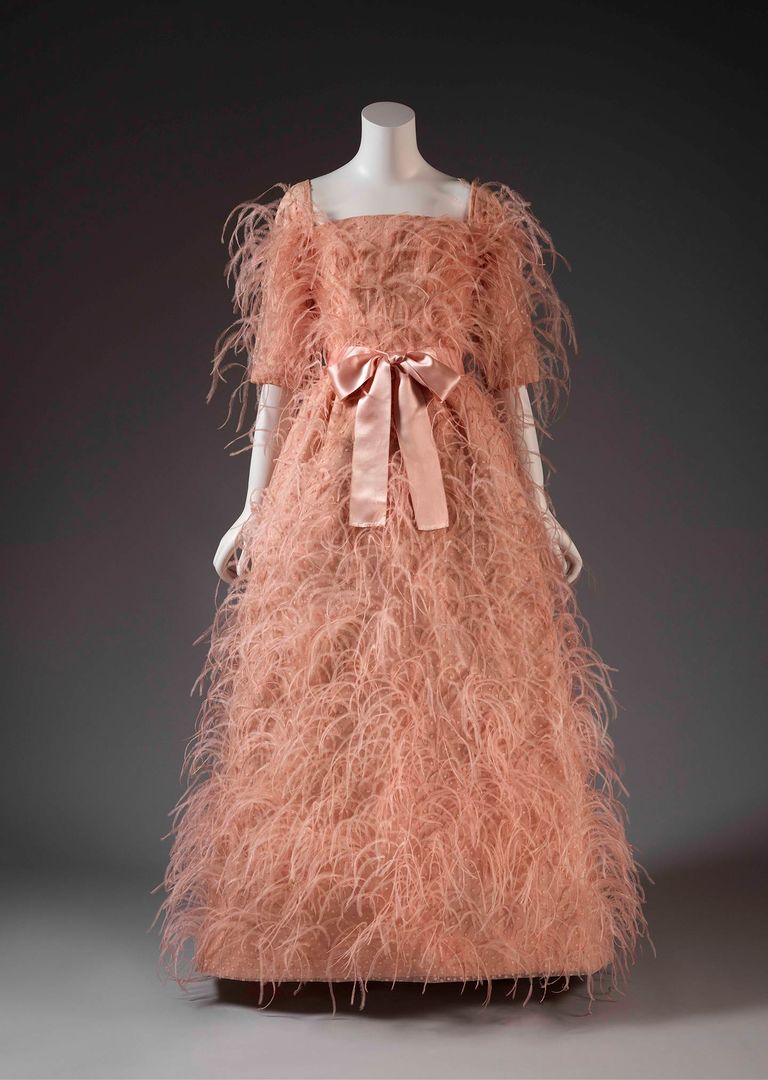Jayne Wrightsman and The Costume Institute
Harold Koda, Former Curator in Charge, The Costume Institute
Clothing is an especially potent representation of aesthetic sensibility. Even an erratic sampling of an individual's wardrobe, over their lifetime, is as much biography as it is documentation of period style. The collection of The Costume Institute, therefore, focuses on works implicitly freighted with the history of the people who wore them. Moreover, its archives, here in an art museum, must address artistic achievement in relation to the works in its sister departments.
Given her discerning eye for paintings, sculpture, and decorative arts, it is not surprising that Mrs. Wrightsman included in her contributions to the Metropolitan garments that are significant in their artistic merit. A number of the most exquisite works of haute couture from the second half of the twentieth century are from Mrs. Wrightsman's wardrobe. Presented to the Museum over five decades, her collection could serve as a timeline of the dramatic shift witnessed in fashion from the post–World War II golden age of French couture to the evolution of global brands by the end of the century. The pieces rank as masterworks of tailleur (tailoring) and flou (dressmaking), and represent the exceptional craft of les petites mains, the embroiderers, beaders, feather workers, artificial flower makers, and leather specialists who, with their labor-intensive artisanship, support the most refined and often elaborate fantasies of the couturier.
An early gift, a pale-pink Balenciaga gown of pin-dotted silk gazar lathered in ostrich filaments placed upward, against the grain, is a tour de force of the most significant designer of the mid-century. Cristobal Balenciaga was known as the purveyor of "hard chic," but this dress mutes its austerity with a pale candy color and blurs its hieratic silhouette with a haze of feathers. These feminine qualities infuse much of Mrs. Wrightsman's collection, even in her tailored pieces of architectural precision.
Cristobal Balenciaga (Spanish, 1895–1972) for House of Balenciaga (French, founded 1937). Evening dress, fall/winter 1965–66. French. Silk, feathers, L: 59 in. (149.9 cm). The Metropolitan Museum of Art, New York, Gift of Mrs. Charles B. Wrightsman, 1966 (C.I.66.54.5a, b)
A more recent example of remarkable workmanship is an elaborately embroidered Chanel evening ensemble. A long coatdress with trousers beneath suggests eighteenth-century orientalism and turquerie, as well as that period's open-robe constructions. Not coincidentally, Karl Lagerfeld, the designer of the piece, like Mrs. Wrightsman, was a devotee of dix-huitième elegance.
Karl Lagerfeld (French, born Hamburg 1938–2019 Paris) for House of Chanel (French, founded 1913). Evening ensemble, fall/winter 1989–90. French. Silk, metal, L. at CB (a): 58 3/4 in. (149.2 cm), L. at CB (b): 44 1/4 in. (112.4 cm). The Metropolitan Museum of Art, New York, Gift of Mrs. Charles Wrightsman, 1993 (1993.157.7a, b)
Mrs. Wrightsman's gifts attest to a certain lifestyle and impeccable taste, even through the tumultuous period of change in the 1960s and 1970s. In fashion, a strong individual perspective enriches trends with a humanizing originality. Deep knowledge and a disciplined editorial vision separate the distinctively stylish from the merely fashionable. Mrs. Wrightsman's contributions reveal the course of fashion in her time, but also the clarifying eye and rigor of a connoisseur.
Selected Works
See selected works from the Wrightsman Collection in The Costume Institute.

